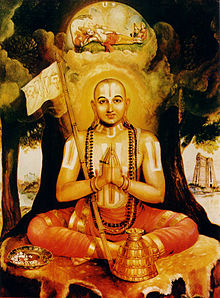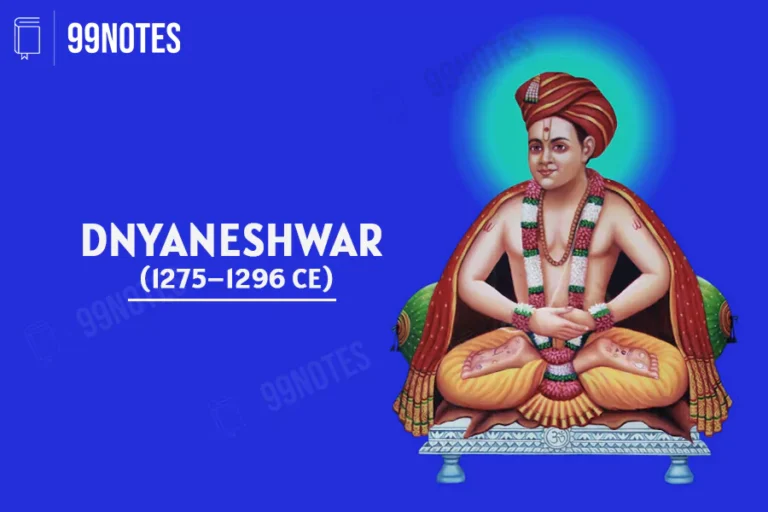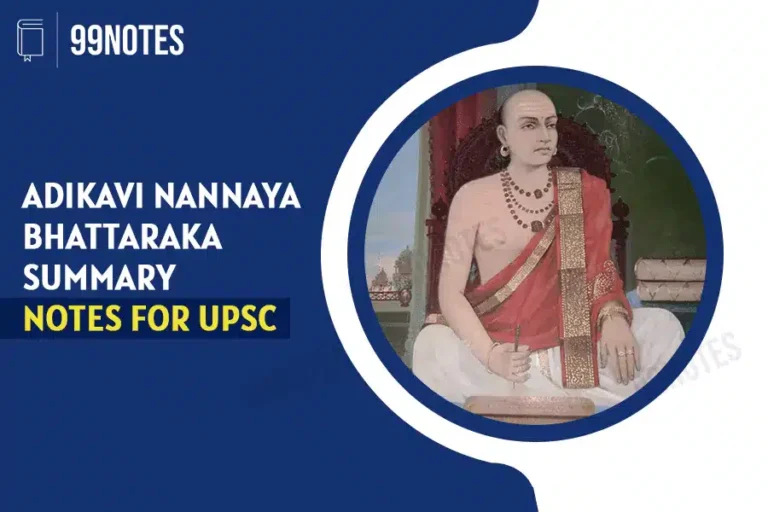Ramanujacharya (1017-1137 CE)- Teaching & Philosophy, Statue , his efforts in Social Reforms
Ramanujacharya (1017-1137 CE)

Ramanujacharya was born into a Tamil Brahmin family in Sriperumbudur in Tamil Nadu, during the rule of the Cholas. Ramanujacharya is revered as a social reformer and Vedic philosopher.
- Ramanuja was originally known as Lakshmana/ Llaya Perumal but later came to be known as Ramanuja. He was a South Indian Brahmin and a great devotional thinker of Hinduism.
- He was a great devotee of Vishnu and dedicated his life to worshiping Lord Vishnu as he was a follower of Vaishnavism.
- He traveled across India, advocating social justice and equality. Ramanuja Revived the Bhakti Movement, and his preaching inspired the Bhakti school of thought. He went on to write a total nine scriptures, known as the Navaratnas and composed numerous commentaries on Vedic scriptures.
- He also established the correct procedure for rituals performed in temples throughout India, the most famous being Tirumala and Srirangam.
- Ramanuja began teaching people and encouraging them to follow the path of bhakti and taught them about the principles of salvation and how they can attain it with the help of God.
- Ramunaja was always against caste based discrimination and even helped the people to follow the Bhakti Movement and Vaishnavism.
Ramanuja’s Teaching and Philosophy
Ramanuja’s teaching is a blend of philosophical discussion along with devotional worship. Ramanuja’s teaching helped spread the Visistadvaita Vedanta School of Hindu Philosophy.
- He is known for his philosophy of Qualified Monism or Qualified Non-duality (Vishishthadvaita), which has vitalized the Vaishnava tradition in the country.
- As per this philosophy, the Atman (individual soul) and the Brahman (Supreme Lord) are qualitatively one but differ in one aspect: while the Lord is infinite, the Atman is infinitesimal.
- Vishishthadvaita, which explains about a way for the individual self to reach the supreme soul.
- The path to liberation is through the Bhakti Marga, not through observing rituals or shedding the bonds of transmigration. Instead, the path to Bhakti involves a positive quest to contemplate God. Further, it consists of an experience of joy that results from devotion, praise, worship, and contemplating divine perfection.
God can be pictured as sitting in Vaikuntha (heaven) with his consort and attendants. Thus, he was a Saguna Bhakti saint.
Literary works of Ramanujacharya
The works of Ramanujacharya were a total of nine, and all are in the Sanskrit language. All his works are the beacon lights for Veda and Vedanta literature.
Ramanuja’s work is based mostly on his Advaita Vedanta philosophy. It is believed that he has composed a total of nine monumental works known as ‘Navaratnas’. Some of the most monumental works of Ramanuja are as follows:
- Shri-bhashya – commentary on the Brahma-sutras
- Bhagavadgita-bhashya = his commentary on the Bhagavadgita
- Vedantadeep
- Nityaradhana-Vidhi
- Gadyatraya
Statue of Equality

- The Statue of Equality is a 54-foot-high statue of Ramanuja at Hyderabad. It was inaugurated in the year 2022.
- The statue celebrates the spirit of equality (including faith, caste, and creed) promoted by 11th-century Bhakti saint Ramnujacharya. Ramanuja worked tirelessly for the upliftment and beterment of people with the spirit of every human being equal regardless of caste or creed, nationality, race, gender.
- It is made up of ‘panchaloha’ (a combination of 5 metals: gold, silver, copper, brass, and zinc)
- It is among the tallest statues in a sitting position in the world. It is mounted on a 54-foot-high base building known as ‘Bhadra Vedi’.
Efforts at social reform
- He received his diksha from Kanchipurna Swami, a shudra disciple of Yamunacharya. He connected people with a common thread of Bhakti.
- He deputed qualified teachers in single temples and mutts to teach the Vedanta philosophy to everyone who came with the intention of learning, regardless of their caste, gender, economic status and social background.
- He undertook an all-India tour and reached as far as Kashmir’s Sharadha peeth to collect references for his writings.
- He established Vishnu temples and mutts at 108 places.
- Through his Shri-bhashya, Ramanujacharya made the ‘Brahmasutra’ scripture to the masses in a way they could easily understand.
- He believed in knowledge-sharing for the benefit of ordinary people.
Once, he met Swami Goshthipurna in solitude to receive sacred mantras from him. Swami Goshthipurna had asked him to keep the mantra secret. But, as he came out to meet the public, he recited the mantra loudly.
He said: ‘There was no greater salvation than sharing the divine knowing with deprived ones.’

![Bilhana- 11Th Century Kashmiri Poet [Upsc Notes] | Updated July 26, 2024 Bilhana- 11Th Century Kashmiri Poet [Upsc Notes]](https://99notes.in/wp-content/uploads/2023/03/bilhana-99notes-upsc-768x512.webp)




